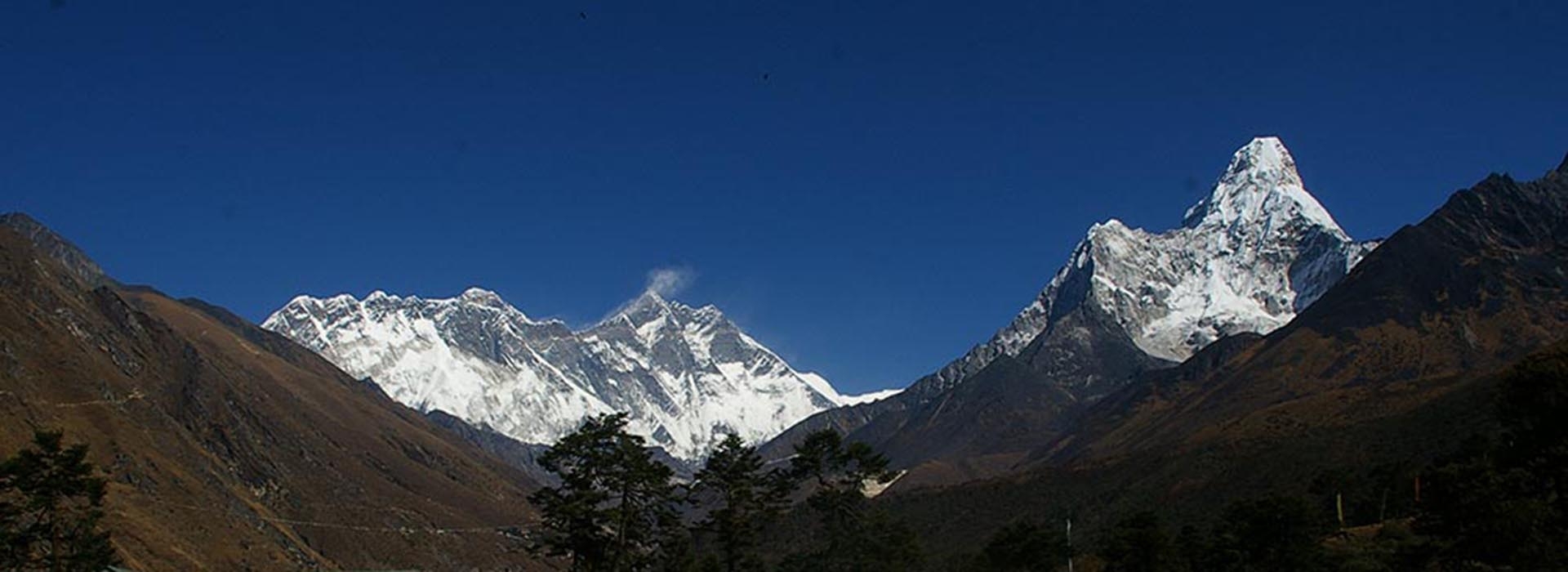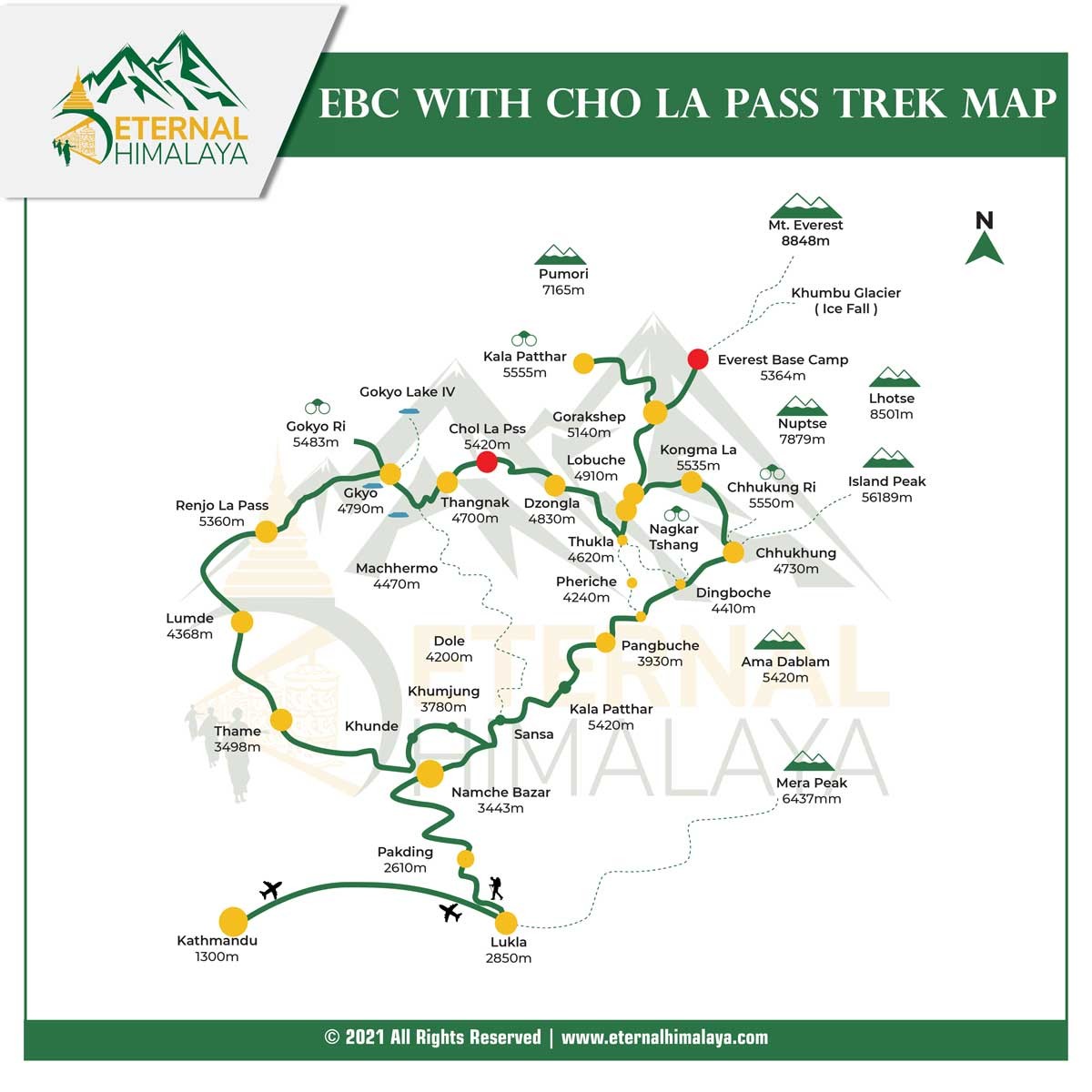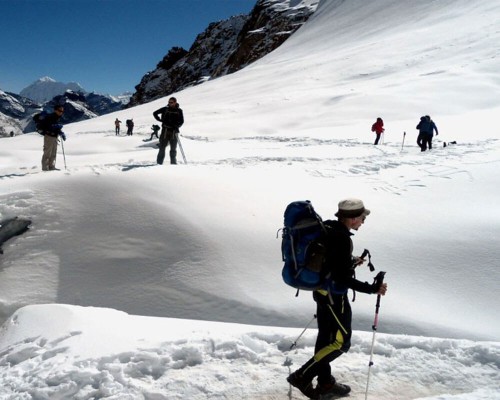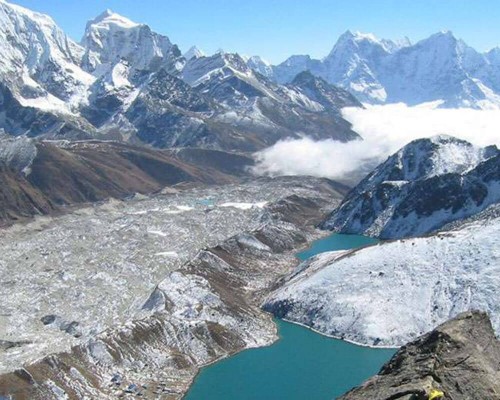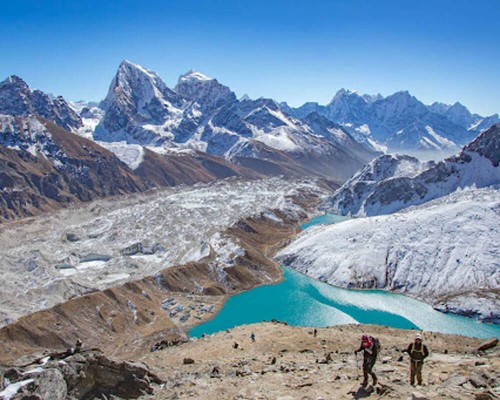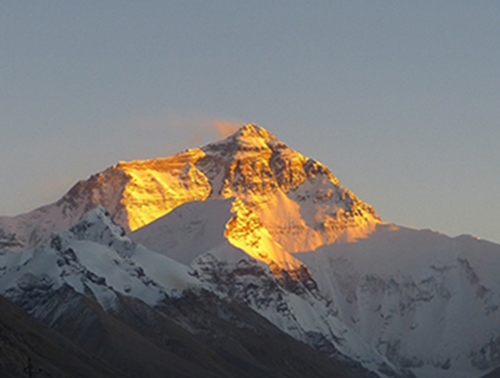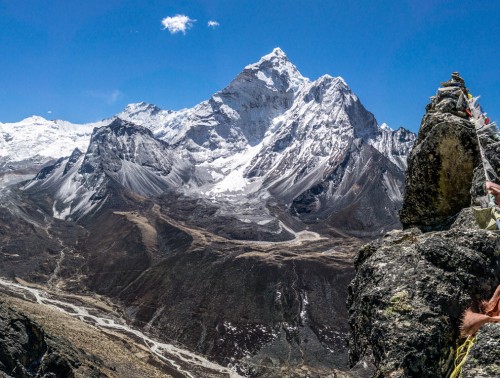The Everest Base Camp with Cho La Pass Trek is one of Nepal’s most thrilling and scenic adventures — a journey that combines the classic EBC route with the majestic Gokyo Lakes and the challenging Cho La Pass (5,420m). This 18-day trek offers everything from panoramic Himalayan views to authentic Sherpa culture, making it an unforgettable Himalayan experience.
Your journey begins with a mountain flight to Lukla, followed by a trek through picturesque Sherpa villages like Phakding, Namche Bazaar, and Tengboche — each rich with Buddhist heritage and warm local hospitality. As the trail ascends through Sagarmatha National Park, a UNESCO World Heritage Site, trekkers are surrounded by pristine forests, glacial rivers, and magnificent peaks.
The route continues to Dhole and Machhermo, leading to the mesmerizing Gokyo Lakes — a series of turquoise alpine lakes set beneath the towering Cho Oyu (8,188m). From Gokyo Ri (5,360m), you’ll witness one of the most breathtaking panoramas in the Himalayas, showcasing Everest (8,848m), Lhotse (8,414m), Makalu (8,463m), and Ama Dablam (6,856m).
Crossing the high Cho La Pass is the trek’s most exhilarating challenge, connecting Gokyo with the Everest Base Camp trail. Once on the classic EBC route, you’ll trek to Gorakshep, visit Everest Base Camp (5,364m), and hike to Kala Patthar (5,545m) for an up-close sunrise view of the world’s highest peak.
Blending adventure, culture, and natural splendor, the EBC with Cho La Pass Trek is perfect for experienced trekkers seeking a more adventurous alternative to the standard Everest Base Camp Trek. With Eternal Himalaya, your journey is supported by expert guides, reliable logistics, and personalized care throughout this Himalayan odyssey.


